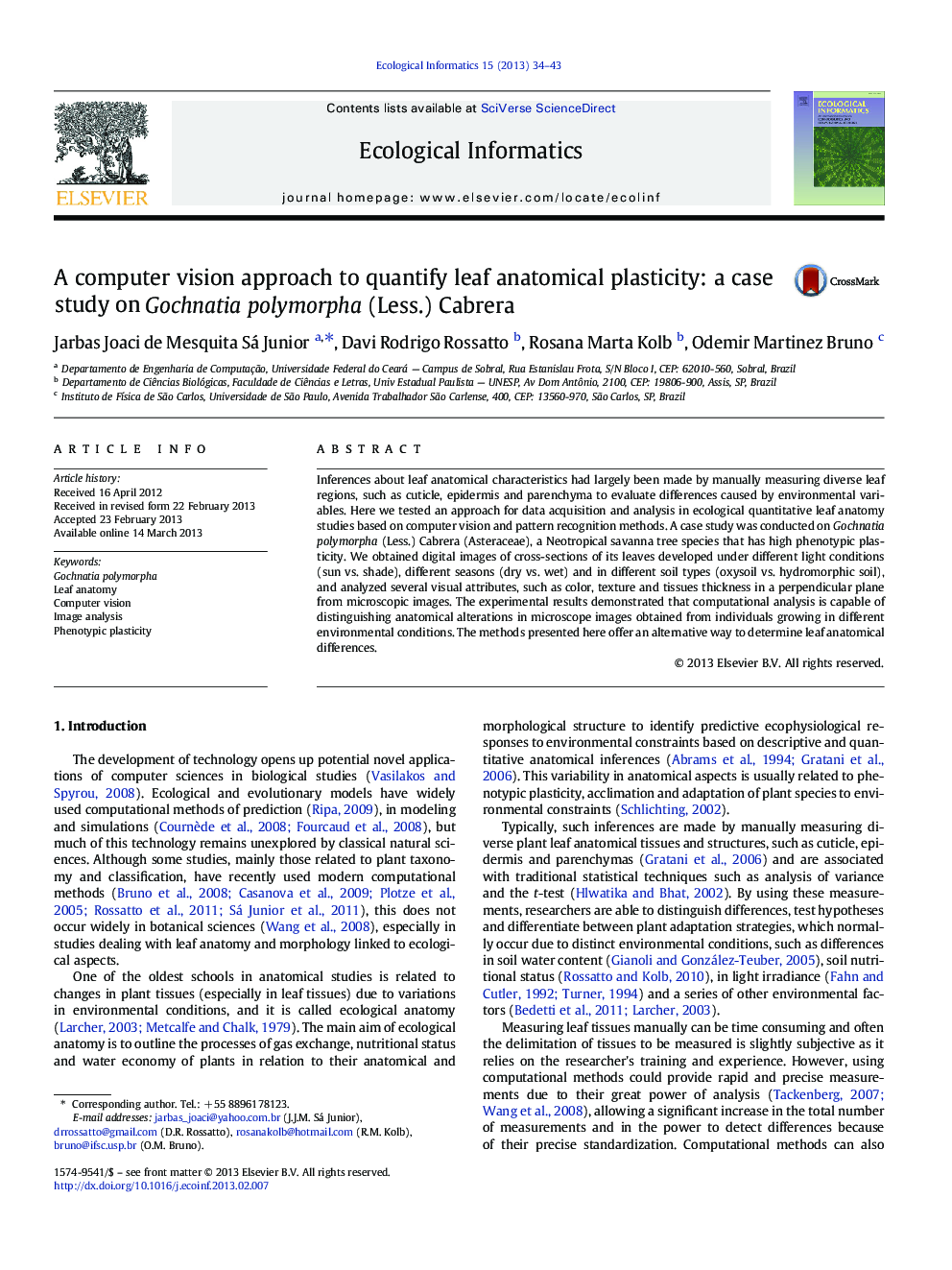| Article ID | Journal | Published Year | Pages | File Type |
|---|---|---|---|---|
| 4374992 | Ecological Informatics | 2013 | 10 Pages |
•We employed an algorithm to segment and measure the cuticle thickness.•We employed an algorithm to segment and measure the adaxial epidermis thickness.•We employed an algorithm to segment and measure the total leaf thickness.•We used algorithms to extract color/texture information from parechyma tissues.•The article correlates these features with nutrient presence, light conditions etc.
Inferences about leaf anatomical characteristics had largely been made by manually measuring diverse leaf regions, such as cuticle, epidermis and parenchyma to evaluate differences caused by environmental variables. Here we tested an approach for data acquisition and analysis in ecological quantitative leaf anatomy studies based on computer vision and pattern recognition methods. A case study was conducted on Gochnatia polymorpha (Less.) Cabrera (Asteraceae), a Neotropical savanna tree species that has high phenotypic plasticity. We obtained digital images of cross-sections of its leaves developed under different light conditions (sun vs. shade), different seasons (dry vs. wet) and in different soil types (oxysoil vs. hydromorphic soil), and analyzed several visual attributes, such as color, texture and tissues thickness in a perpendicular plane from microscopic images. The experimental results demonstrated that computational analysis is capable of distinguishing anatomical alterations in microscope images obtained from individuals growing in different environmental conditions. The methods presented here offer an alternative way to determine leaf anatomical differences.
